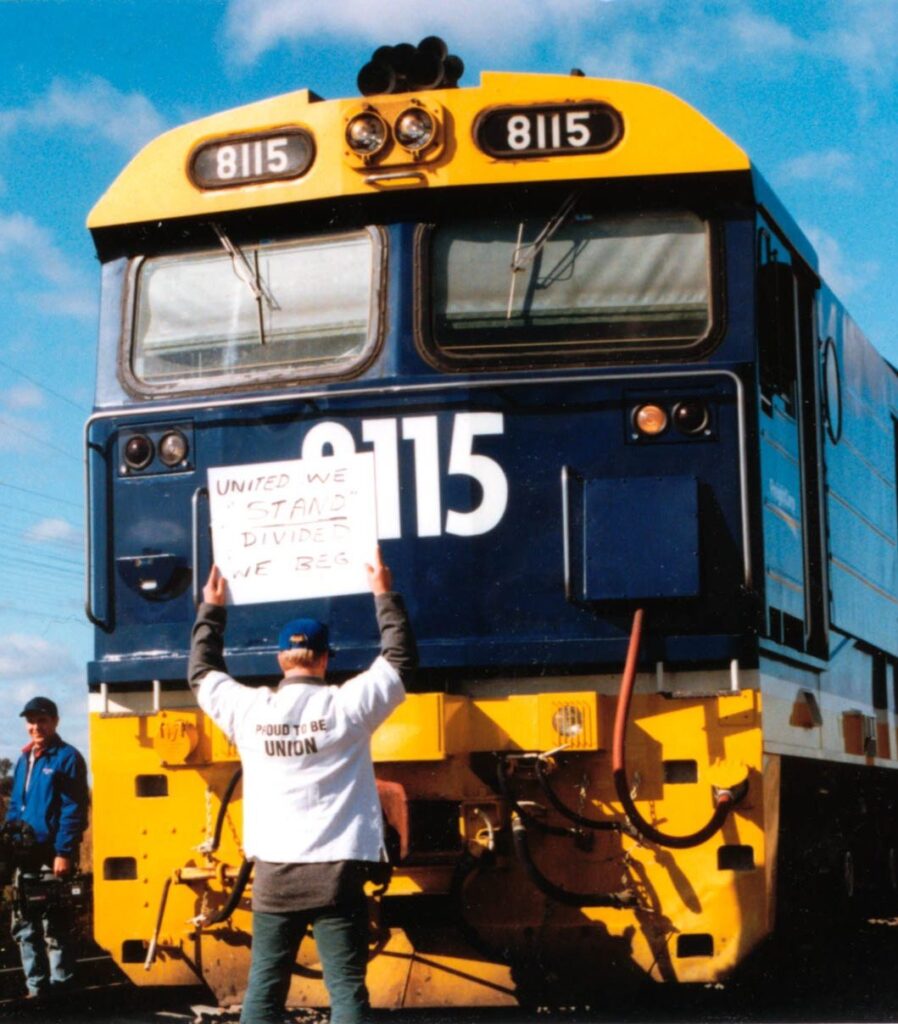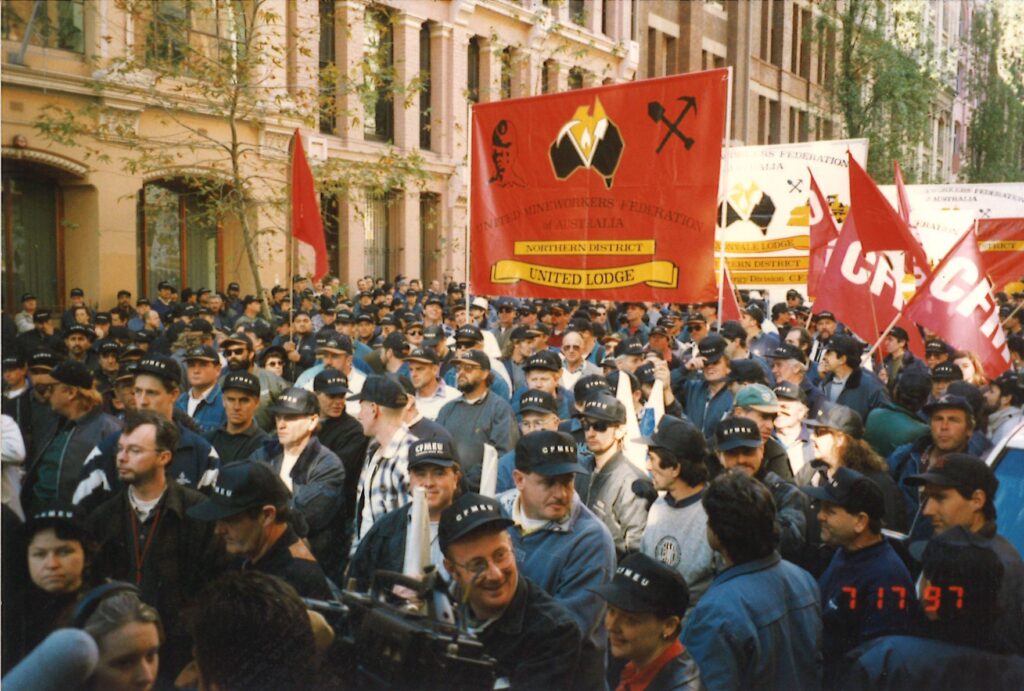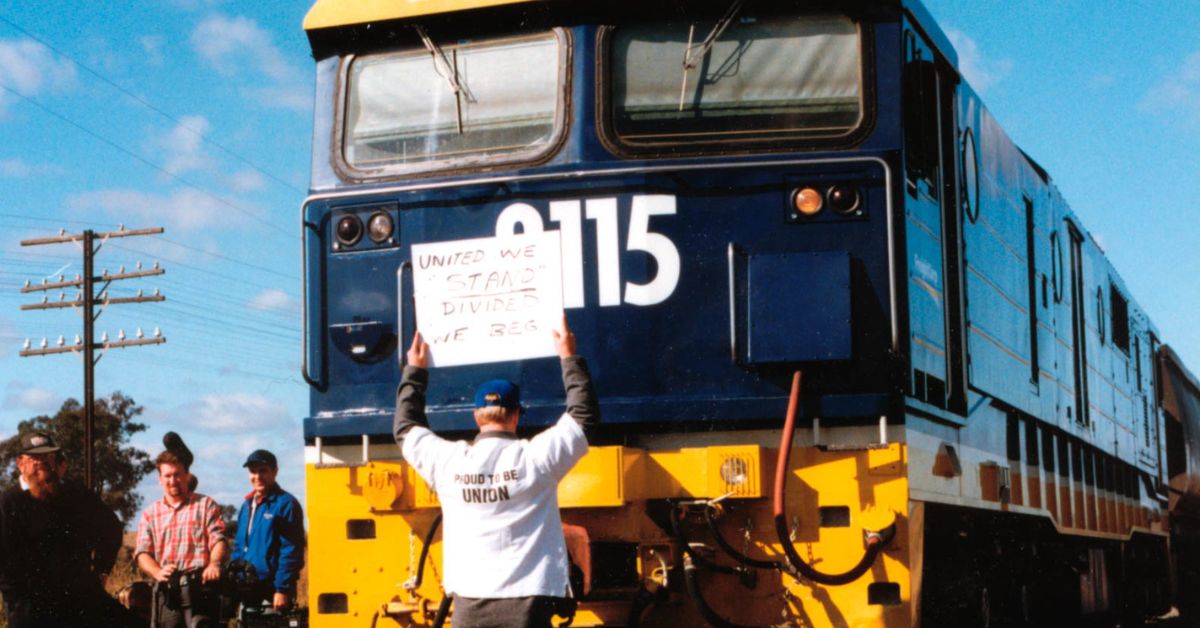July 30, 2025
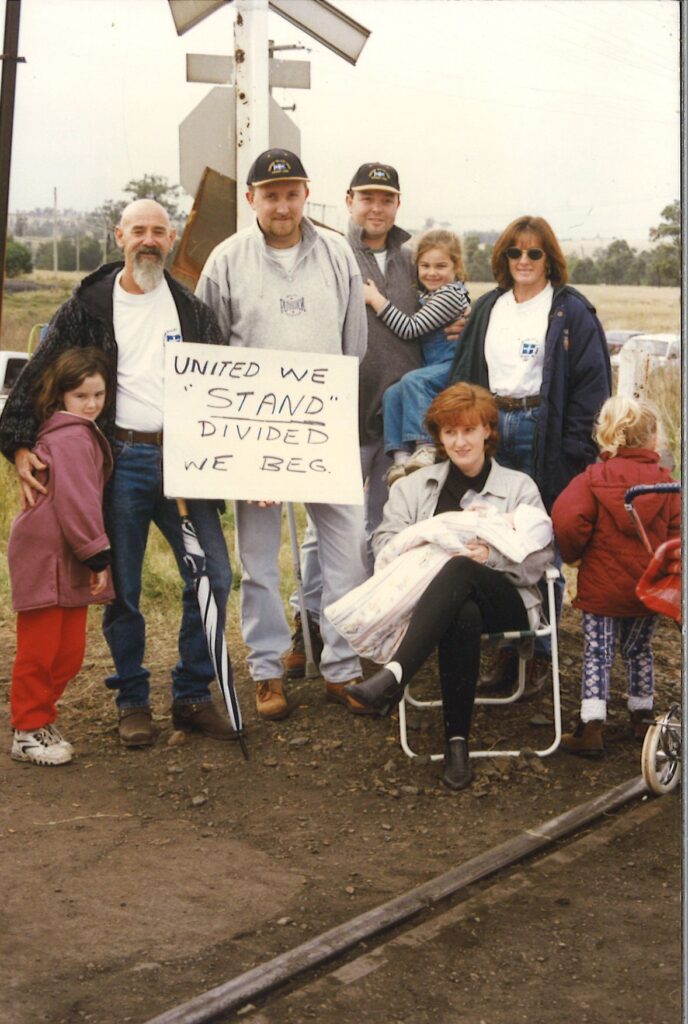
In the winter of 1997, Rio Tinto used Hunter Valley No. 1 as a test bed for a new industrial strategy: push individual contracts, marginalise the union, and use the courts and John Howard’s new Workplace Relations Act to curb pickets and solidarity. Management offered 10% pay‑rise staff deals conditional on resigning from the union; only a handful took them as more than 400 miners walked and held a six‑week stoppage backed by families and the broader movement. The government lined up behind the company, while Rio Tinto sought Supreme Court orders to limit the picket – an early demonstration of how the 1996 laws could be weaponised against collective action.
It’s a dispute that mattered far beyond the Hunter. Rio Tinto’s role foreshadowed a national shift: a sustained drive to replace union agreements with individual contracts and non‑union arrangements.
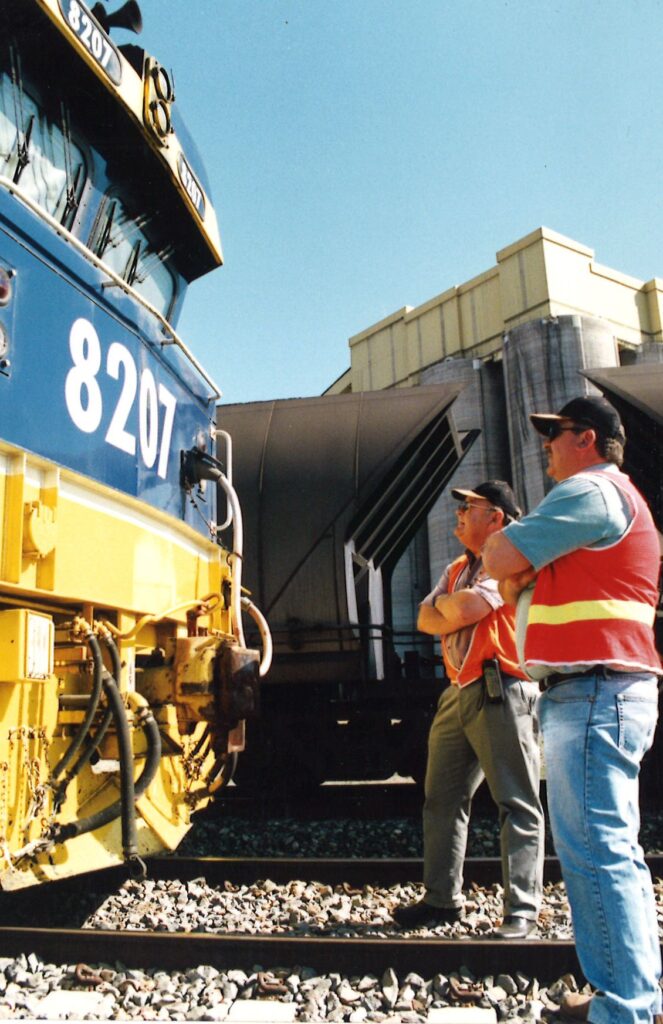
Nowhere were the long‑term effects clearer than in Rio Tinto’s Pilbara iron ore business. Through the late 1990s and 2000s, Rio Tinto accelerated “staff contracts” and AWAs across iron ore, aluminium and bauxite – engineering a de‑unionisation that reshaped power on site. Over time, centralised control and technology deepened that shift: a remote operations centre opened in Perth (2009–10) and fully autonomous “AutoHaul” trains followed in 2019, further moving decision‑making – and leverage – away from mine gates. The rise of FIFO (about 70% of Rio’s Pilbara workforce) also dispersed communities that once sustained collective organisation.
Yet the story isn’t finished. After decades “on the outer,” unions are rebuilding in the Pilbara. In March 2025, more than 400 workers at Rio Tinto’s Paraburdoo signed for collective bargaining – the first step toward an enterprise agreement in over two decades. The same determination that held the Hunter line in 1997 is re‑emerging in WA’s iron ore heartland.
Lesson for today: Hunter Valley No. 1 showed that even when laws and boardrooms align against us, unity can blunt corporate strategies. And in the Pilbara – where Rio Tinto perfected the playbook – workers are writing the next chapter.
